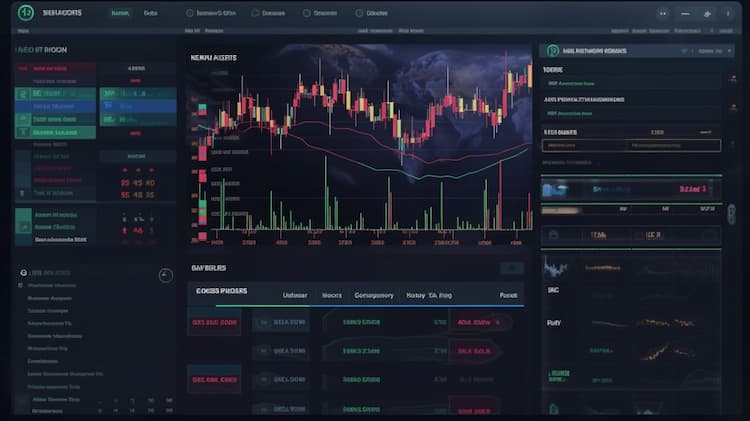SCO ISSUER
ProShares, the issuer behind the SCO fund, employs a strategic approach to achieve its investment objective. By leveraging various financial instruments such as swap agreements, futures contracts, forward contracts, and option contracts, all tied to WTI sweet, light crude oil, ProShares aims to offer investors exposure to the performance of crude oil without directly investing in the commodity itself. This approach allows investors to potentially benefit from movements in the crude oil market while avoiding the complexities and logistical challenges associated with direct commodity investments. Through its innovative investment strategy, ProShares seeks to provide investors with a diversified and efficient means of capitalizing on opportunities within the energy sector.
SCO DIVIDEND
As an inverse exchange-traded fund (ETF), the ProShares Short Oil & Gas (SCO) ETF operates with a unique approach to dividends. Since SCO seeks to provide investors with daily inverse exposure to the daily performance of the Bloomberg WTI Crude Oil SubindexSM, it typically does not distribute dividends in the traditional sense. Instead, investors may experience gains or losses primarily through changes in the ETF's net asset value (NAV) as it tracks the inverse performance of the underlying index. Therefore, while traditional dividend payments may not be a feature of SCO, investors may still realize potential returns or losses from its daily inverse performance relative to the WTI crude oil index.
SCO TRACKING
The ProShares Short Oil & Gas (SCO) ETF is designed to provide inverse exposure to the daily performance of the Bloomberg WTI Crude Oil SubindexSM. As such, SCO employs a sophisticated tracking methodology to achieve its investment objective. Through the use of various financial instruments such as swap agreements, futures contracts, forward contracts, and option contracts, all linked to WTI sweet, light crude oil, SCO aims to replicate the inverse daily returns of its underlying index. While SCO endeavors to closely track the inverse movements of the WTI crude oil index, factors such as market volatility, transaction costs, and other operational considerations may impact its tracking performance over time. Nonetheless, ProShares aims to manage these factors diligently to provide investors with an effective tool for gaining inverse exposure to the crude oil market.
SCO CORRELATION
The correlation of the ProShares Short Oil & Gas (SCO) ETF to the Bloomberg WTI Crude Oil SubindexSM serves as a pivotal aspect in understanding its investment dynamics. As an inverse exchange-traded fund (ETF), SCO aims to deliver inverse daily returns relative to the performance of the WTI crude oil index. Consequently, when the WTI crude oil index experiences gains, SCO typically sees losses, and vice versa. However, the correlation between SCO and the WTI crude oil index may not always be perfectly inverse due to factors such as market volatility, tracking error, and other operational nuances. Investors should remain cognizant of these factors when assessing the effectiveness of SCO as a tool for hedging or speculating against movements in the crude oil market. Despite potential deviations from perfect inverse correlation, ProShares endeavors to manage SCO's tracking performance diligently to provide investors with an inverse exposure vehicle that aligns with their investment objectives.
SCO SECTOR
The ProShares Short Oil & Gas (SCO) ETF operates within the energy sector, albeit with a unique strategy focused on inverse exposure to the daily performance of the Bloomberg WTI Crude Oil SubindexSM. As such, SCO's sectoral positioning is intertwined with the fluctuations of the crude oil market. While traditional energy sector ETFs typically seek to capitalize on bullish trends in oil and gas prices, SCO takes the opposite approach by offering investors a tool to profit from declines in crude oil prices. This inverse positioning within the energy sector makes SCO an intriguing option for investors seeking to hedge against or speculate on downside movements in oil prices. However, it's important for investors to recognize that SCO's inverse strategy may not align with broader sectoral trends, as its performance is primarily driven by the inverse performance of the WTI crude oil index rather than the overall health of the energy sector.
SCO EXPOSURE
The ProShares Short Oil & Gas (SCO) ETF provides investors with exposure to the inverse daily performance of the Bloomberg WTI Crude Oil SubindexSM. This exposure is achieved through a strategic combination of financial instruments, including swap agreements, futures contracts, forward contracts, and option contracts, all linked to WTI sweet, light crude oil. By employing this inverse approach, SCO allows investors to potentially profit from declines in crude oil prices without directly investing in the commodity itself. This unique exposure to the crude oil market makes SCO an attractive option for investors looking to hedge against or capitalize on downside movements in oil prices, providing a valuable tool for portfolio diversification and risk management within the energy sector. However, investors should be mindful of the inherent risks associated with inverse ETFs, including potential tracking error and heightened volatility, and conduct thorough due diligence before incorporating SCO into their investment strategy.



